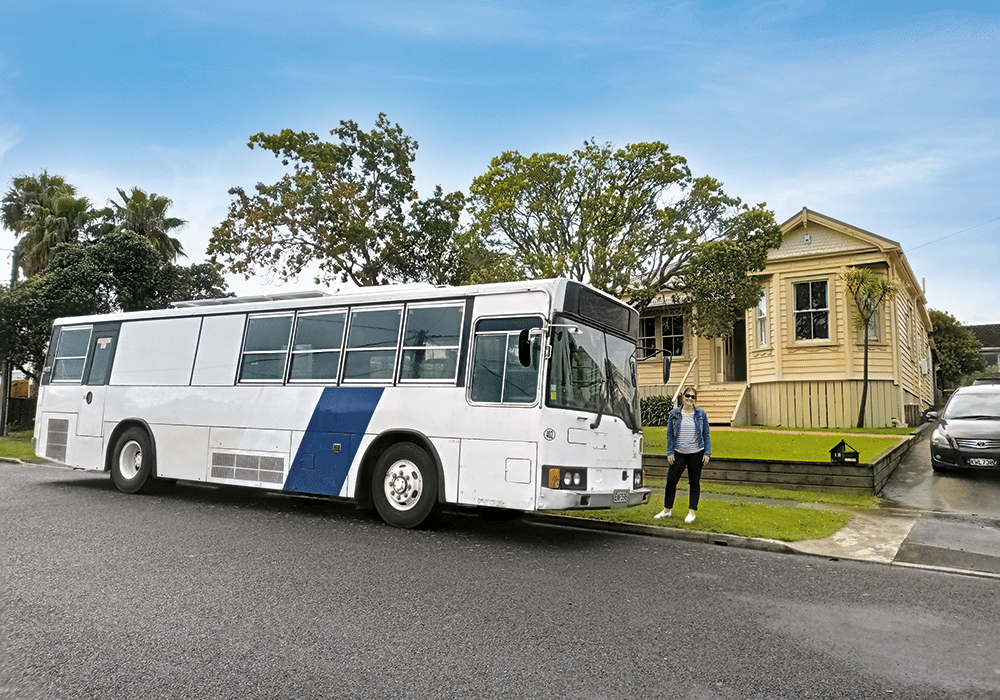Covid-19 has forced most of us to make modifications, but for Kylee Sterling and Greg Southcombe, this has led to a whole new way of life. Jill Malcolm reports.
Before the viral invasion, Auckland couple Kylee Sterling and Greg Southcombe were renting a house in Devonport. Kylee worked in the occupational therapy department at AUT. Greg was a digital marketer for the travel industry, and among his clients were two motorhome rental companies. Recognising a good idea, the couple bought three Mercedes Sprinter campervans, and in 2018 they set up a rental company called Your Kind of Camper.
“We were just dipping our toes in the water,” says Greg. “But we had big plans to expand because it was all going along very nicely. And then came Covid and suddenly it wasn’t. We kept one van and sold the rest. Kylee kept her job and I went back to digital marketing.”
But the couple were unsettled, and during lockdown started to rethink the way they were living. Curiosity led them to start following blogs of people who had converted buses and were living in them.
“These were mainly in America,” says Kylee. “Until we became interested, we had no idea there were so many people out there involved in living off the grid. And as we watched the various stages of conversion we began to think, ‘We could do this’.”
The timing was right. Not only had their new business come to a halt, the cost of getting into the property market was putting pressure on them, but a mortgage felt like too much of a commitment. Kylee had lost enthusiasm for her job, Greg was stressed in his, their old dog passed away, Greg’s kids had left home, and their parents were independent. It was the perfect window for them to go and look at New Zealand, and converting a bus to live in seemed the right way to go about it. There was a lot of how-to information on the internet, but the couple had little building experience and recognised they were going to need help.
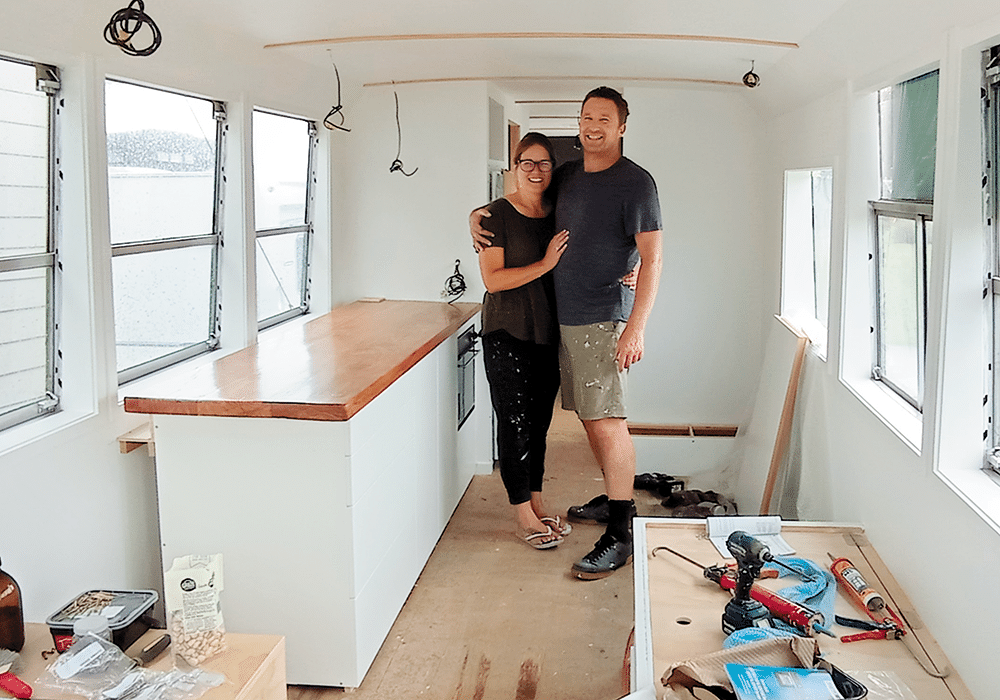
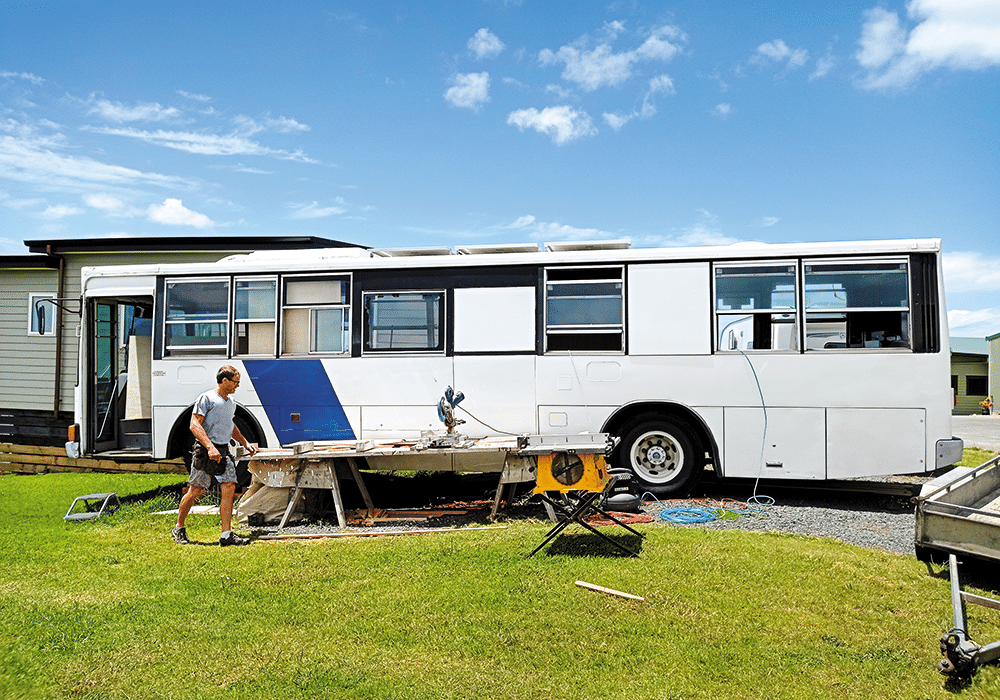
Choosing a bus
“The first thing was to get the right vehicle,” says Greg. “We spent many hours trawling Trade Me and bus dealers’ sites, and we went and looked at a lot of buses all over the country. There were some things we had to work around. I’m 6 foot 2 and my height needed to be accommodated. A lot of coaches drove beautifully but because of their undercarriage storage, head height was compromised.”
In Rotorua, Ritchies Transport were selling school buses, and there they found a Mitsubishi Fuso which had been built as a city bus in Japan in 1994.
In 2008 it had immigrated to Rotorua, where it was used to carry school kids around the countryside. It was 10.5 metres long, with a diesel motor that had 800,000 on the clock.
“It had good bones and had been fitted with larger tyres for its rural life, so we felt it would handle the open road, ” says Greg.
In August 2020 they were the owners of their potential wheel estate. The engine was found to have a fault, and the dealers replaced it with one they took from a decommissioned bus on the West Coast. After that, their new acquisition stayed in Ritchies’ yard for two months, while Greg and Kylee lived on-site in their campervan and stripped out the interior and removed the heaters and air-conditioner. “It was a filthy job but except for the heaters, fairly straightforward.”
“We built up a great relationship with the staff at Ritchies,” says Kylee. “We’ve kept in touch and the first thing we’ll do when we come out of lockdown is take the finished product to Rotorua to show them.
“The task ahead of us could have seemed daunting at this stage, but I’m a practical person and I knew it would be fine if we took it one step at a time.”
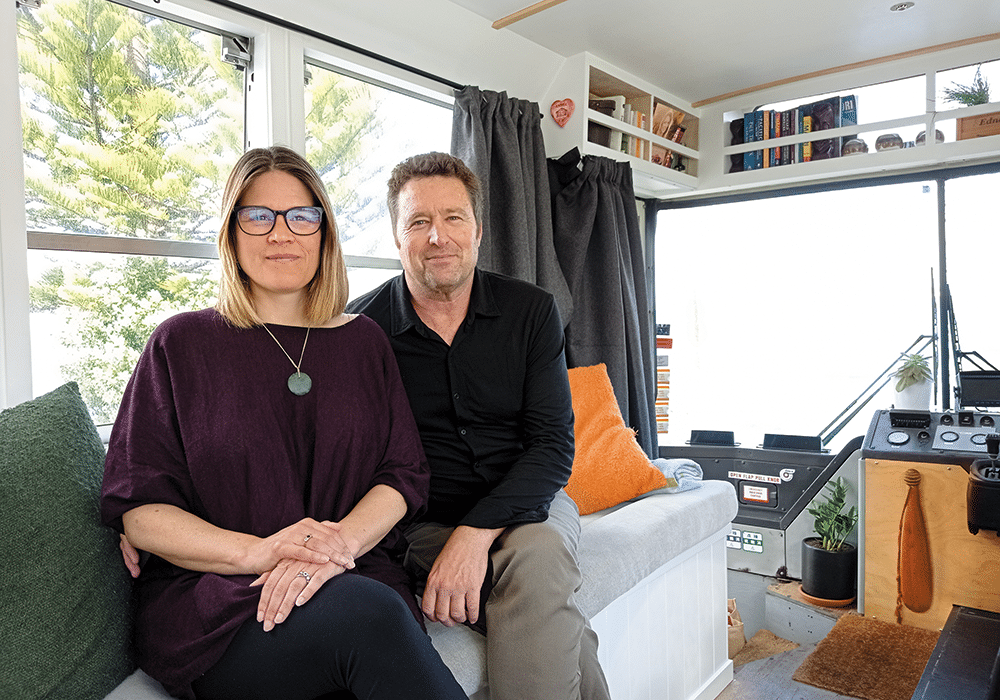
Fit-out
Acknowledging that their skills were limited, the couple set about finding professionals to help them. They wanted the fit-out to be flawless. Not only were they going to live in the bus full-time, they intend it to be part of a business some time in the future.
“We were particular about the layout,” says Kylee. “There were some things we would not compromise on, even though we had to work around the wheel arches. First up was the shower, which we wanted to be the size we would have in a home. We needed a king-size bed, a full-size fridge, a composting toilet, a full-size stove and a dedicated workspace.”
“At some point, we brought in the experts – engineers, builders, plumbers, solar-consultants and electricians,” says Greg. “Then we became their assistants, doing the jobs such as carrying, sanding, sourcing, polyurethaning, puttying and painting. We certainly learnt a lot in the process.”
They also had some good luck. A friend, Kent Michalick, a qualified builder who had spent years working on superyachts, undertook the construction.
He was based in Waipū and had a large section, part of which he set aside for the bus while he was working on it. Kylee left work. The couple continued to live in their van or at Red Beach with Greg’s mother, and every week commuted to Waipū.
“We had a fantastic summer working on the bus,” says Kylee. “And we loved the experience of living in Waipū.
The people there gave us great support. It became obvious that Greg and I had to work as a team. We recognised what our particular skills were. I am the driver, for instance, and Greg is the doer. Our old roles were thrown out. It was as if we had started with a clean slate.”
Eight months later the fit-out was done, complete with a Breville Espresso coffee machine and full-size domestic fridge run on a digital inverter.
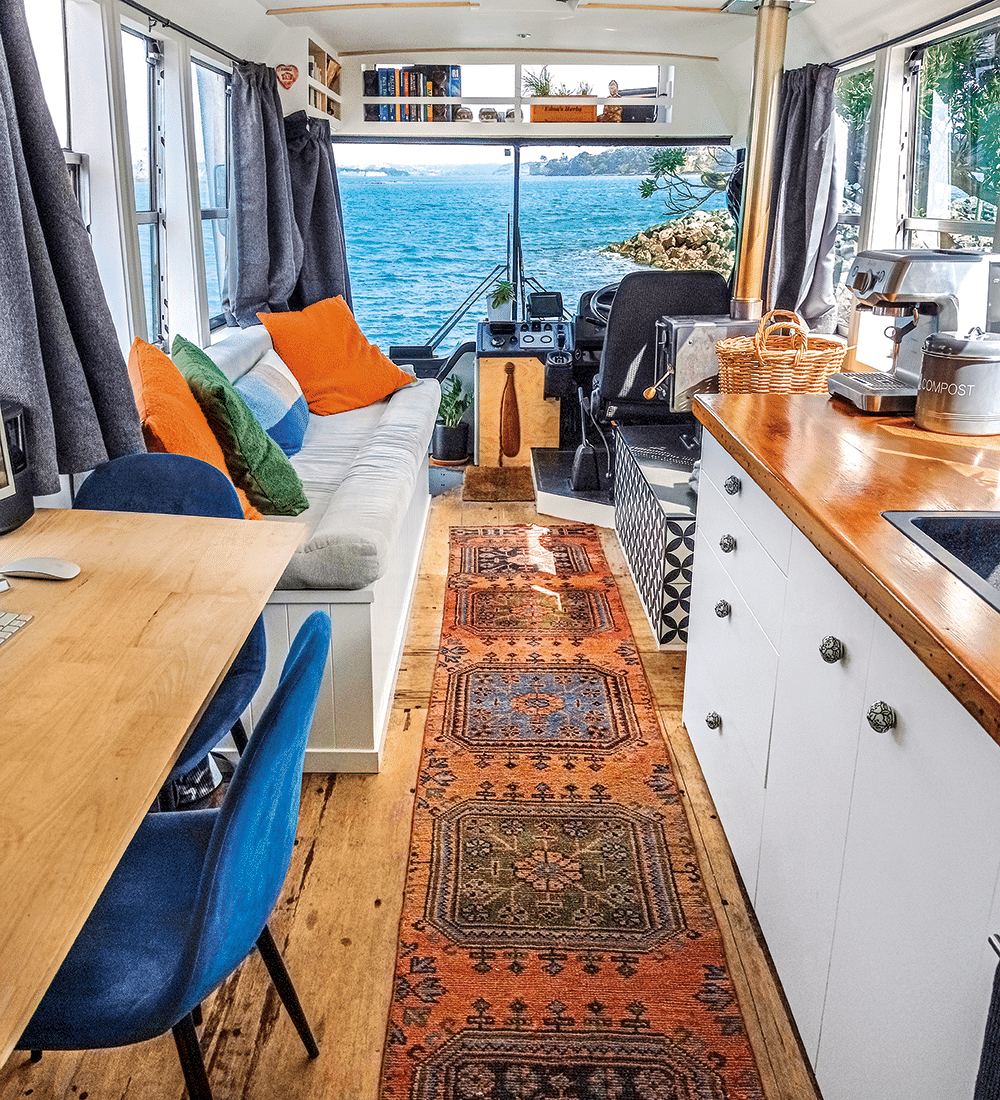
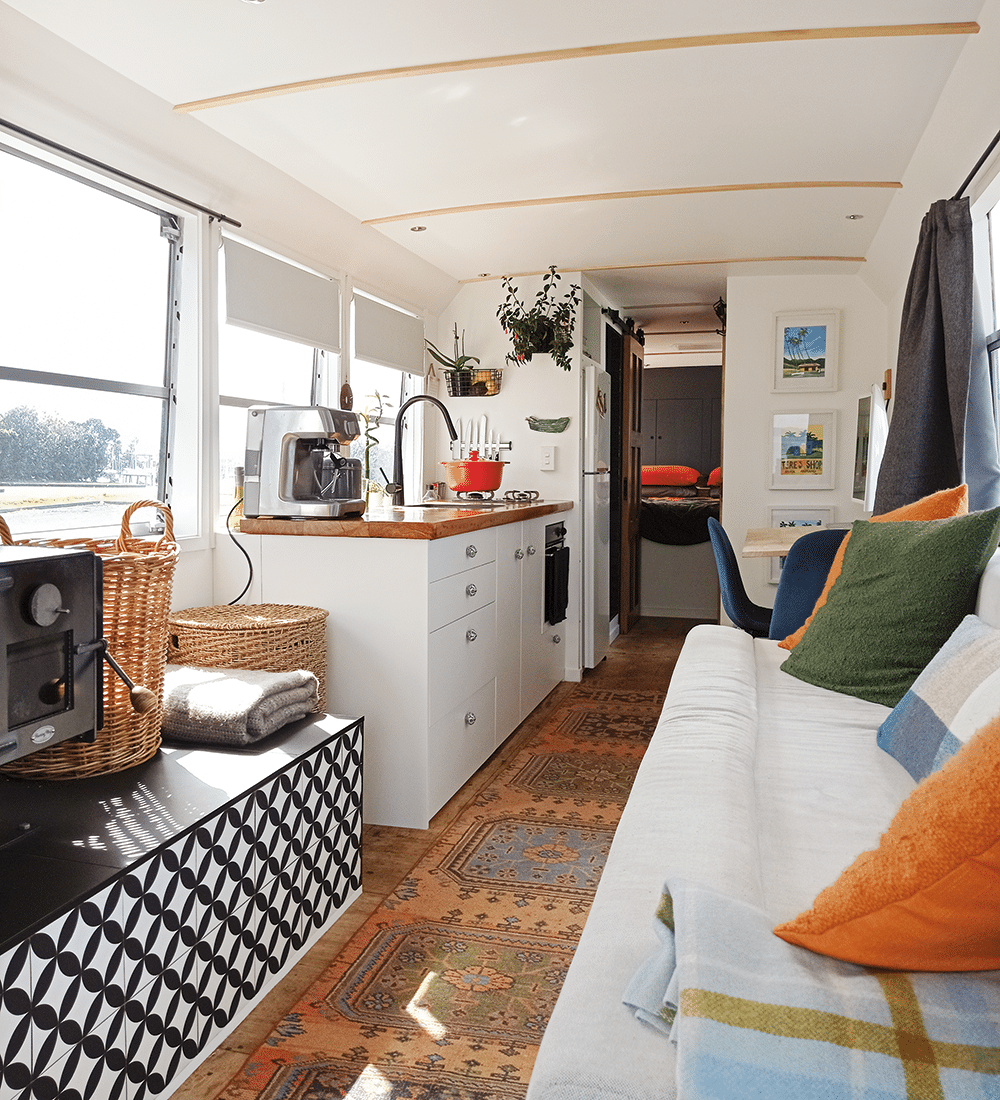
Self-sufficiency
“Because the idea was to live off the grid, a solar panel system that would serve all our needs was important,” says Greg. “Motorhome Solar in Hamilton asked us how we intended to use our house bus and then designed the system to suit. We might have gone a bit overboard in that regard.” The solar panels on the roof produce 1200W of electricity that charge two 125 amp-hour lithium batteries. A 2000W inverter means they have both AC and DC power. The water tanks are also large for the same reason. Two 260L freshwater tanks were installed, and two greywater tanks of the same size. For internet communication they use a router and their own Wi-Fi network. “This is for my digital work and because when we travel, we use apps such as Campermate for information on where to stay and dump station locations.”
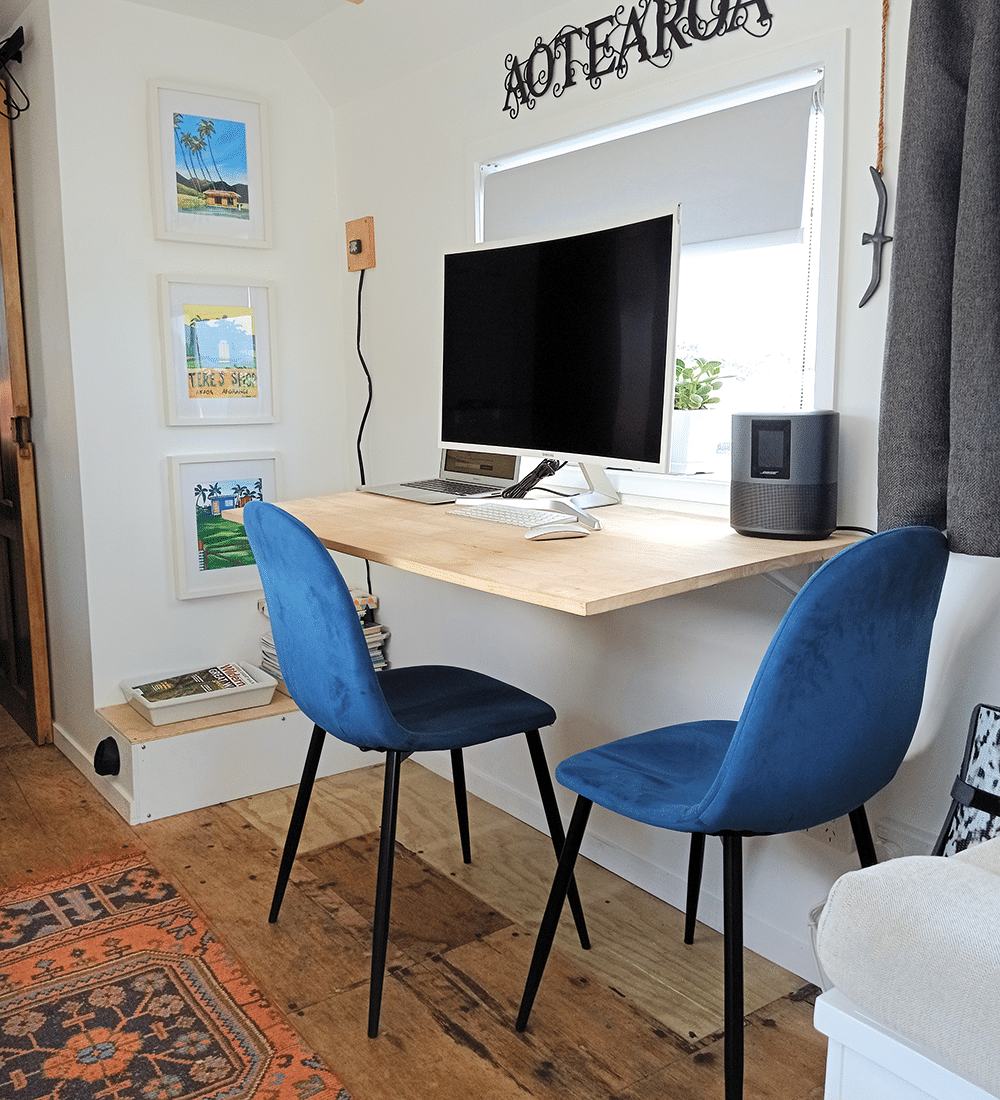
Interior
The colours of the decor are subdued and add to the feeling of space and light. Of note is the impressive matai benchtop – fashioned by Greg’s brother Mike from timber he found in a demolition yard – and the splendid shower, which was also the most difficult part of the conversion. Although warned against the idea, they were determined to have a large shower lined with tiles. Glueing and waterproofing them to cope with the rigours of the road turned out to be a huge issue.
Cooler climes will pose no problems. The walls and ceiling are fully insulated, a Roaring Meg wood-burning fire-box is in situ near the front of the bus, and a diesel heater is installed mid-ships. Insulation on the floor is a vintage wool Turkish rug, and at night they insulate the bedroom windows with Silverzone reflective foil. For ventilation and to cool things down in summer, two Maxxair fans are installed in the ceiling.
After eight months, and around $110,000 lighter in the pocket, Kylee and Greg are the enthusiastic owners of a functional, comfortable house bus with a modern interior and a personality of its own. They have called it Edna, a name that was not symbolic of anything but seemed to fit. With lockdown’s end pending she will, at last, be on the road.
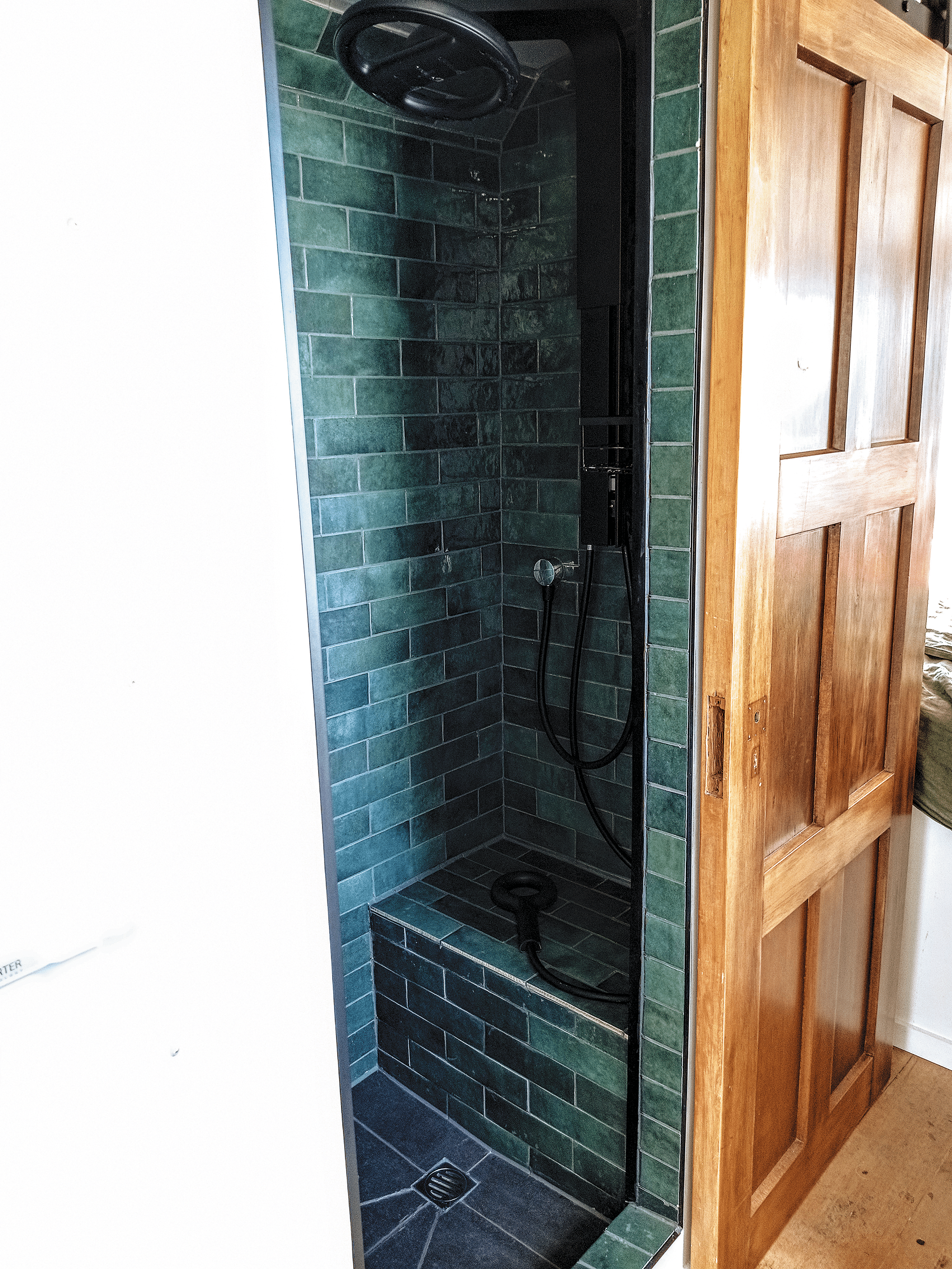
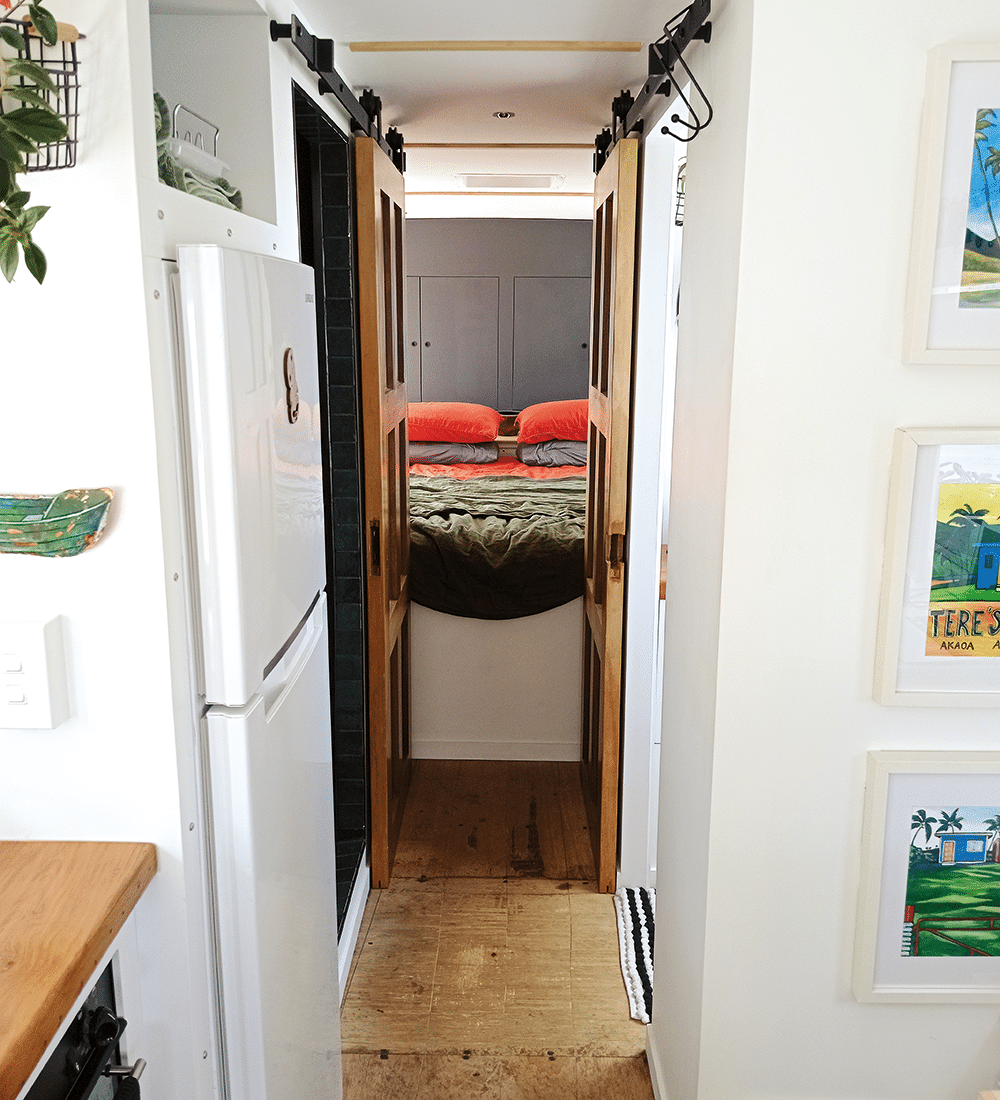
Looking for motorhomes or caravans for sale? Browse our latest listings here.

